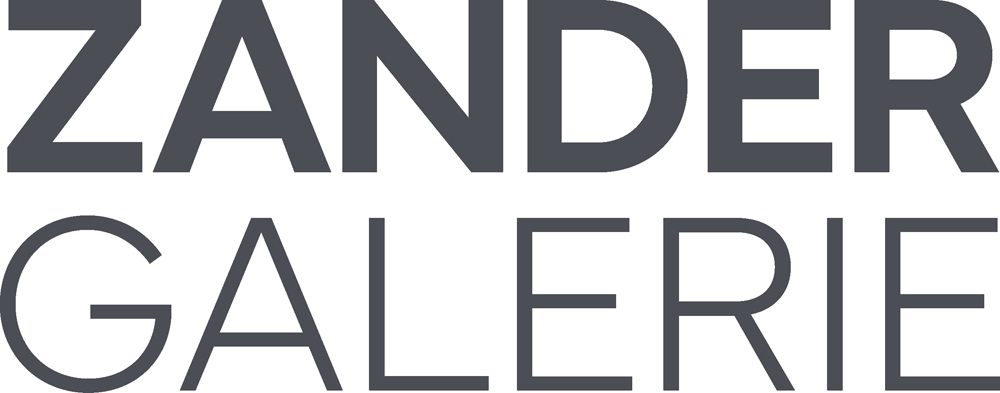PETER DOWNSBROUGH
Galerie Thomas Zander is pleased to present its first large-scale solo exhibition with Peter Downsbrough from 9 September to 5 November 2011. This new collaboration was inaugurated earlier this year by a few works included in the gallery’s group exhibition "CUT".
The current show features a new room piece "ORTUNG" (2011), and "Two Poles" (1970-2011) as well as a series of b/w photographs and some early drawings. The line is the significant element uniting the two- and three-dimensional works Downsbrough brought together for the exhibition. The “Two Poles” are composed of vertical, black aluminum pipes, whereas the room piece ORTUNG the pipes are used in combination with black tape and adhesive letters affixed to the wall and floor. The drawings are variations on two lines stamped on graph paper, and the photographs show urban settings and architectural details. From early on, the line played an important role in Peter Downsbrough’s work, either in the form of pipes or poles in the exterior and interior sculptures, or as recurring graphic elements, on walls or on paper, and in his books, posters or invitations, articulating space.
"Following from the core of the work – place, location, position – it was only logical for this first exhibition at Galerie Thomas Zander that I use the word ORTUNG (as well as a group of recent photographs) while at the same time including a piece from 1970, 'Two Poles' (as well as some 'Two Line' drawings) that locates the period of this ongoing investigation." (Peter Downsbrough)
From the early 1970s Downsbrough installed his "Two Poles / Two Pipes" in various locations, subsequently revisiting this sculptural work in his more recent work. Today, there are exterior sculptures consisting of groupings of black metal pipes of varying lengths set up on urban boulevards, in landscapes, private gardens or public squares. It is not possible to view the work without simultaneously taking in the surrounding space, a situation that prompts an open discourse on constant change. It is not only a matter here of the relationship of sculpture to space, but also one’s position in time and space. Downsbrough's treatment of these issues can be compared to that of artists such as On Kawara, Stanley Brouwn or Giovanni Anselmo.
Peter Downsbrough has developed a strongly reduced visual vocabulary, which he uses to investigate the given space in a very personal and precise way. His material consists of letters and lines. He uses adhesive letters, forming conjunctions, prepositions, verbs and/or nouns and applies them to the walls, floors and/or ceilings. Lines, for which he uses cloth tape, emphasize certain architectural elements. Metal pipes, in the space and sometimes on the wall, accentuate the space. Areas defined by lines or painted black sometimes play a role and, with the lines and the words, reveal the architecture of interior or exterior spaces.
This rigorous treatment of the space continues in Peter Downsbrough’s books, maquettes, photographs, videos or prints. They all reveal an extreme coherence, which some situate in the minimal and conceptual art movements. In the course of time, the spatial interventions with the parallel vertical pipes or dowels have been complemented with words, lines and planes. Conjunctions such as AS, IF, BUT, FROM, AND, AB, UND, ZU, ET, OU, MAIS … have a double function: they work as iconographic signs which underline and reveal the space, and they offer the viewer the possibility to go, in his/her mind, from one thought to the other. For a conjunction is a word that can’t be declined or conjugated; it establishes a connection between sentences or parts of sentences.
“With the word, one takes part in a dialogue, a discourse on its precise meaning. (…) The word for me is an object. It has both a precise and a vague meaning. It is a universe one is confronted with. But there is no obligatory way of reading.” (Peter Downsbrough)
Peter Downsbrough (born in 1940 in New Jersey, lives and works in Brussels) studied art and architecture and was among the first generation of artists that included Sol LeWitt, Robert Barry and Lawrence Weiner, to use the book as an integralpart of his work. Ever since his first publication in 1972, Downsbrough's books, which include not only texts and individual words, but also line drawings and later maps and photographs of urban landscapes, have become an important component of his oeuvre. "Peter Downsbrough: The Books, 1968-2010" (Hatje Cantz, 2011), was recently published to accompany an exhibition of all the books to date, curated by Moritz Küng at deSingel, international arts campus, in Antwerp. The newly published "Shifting Places. Peter Downsbrough, the photographs” by Alexander Streitberger (2011, Leuven University Press, Belgium) offers the first overview of the artist's photographic work.
Downsbrough's work is represented in international collections such as MACBA, Museu d’Art Contemporani, in Barcelona, and SMAK, Stedelijk Museum voor Aktuele Kunst, in Ghent. His work has been shown in numerous exhibitions around the world since the 1970s, most recently in 2010 in “A Bit of Matter and a Little Bit More. The Collection and Archives of Herman and Nicole Daled 1966-1978” at Haus der Kunst, Munich, and in "Spatial City: An Architecture of Idealism" at the Museum of Contemporary Art Detroit. From September to November of this year, works of his will be on view in the group exhibition "Die Fünfte Säule " at the Vienna Secession, including a new book.
